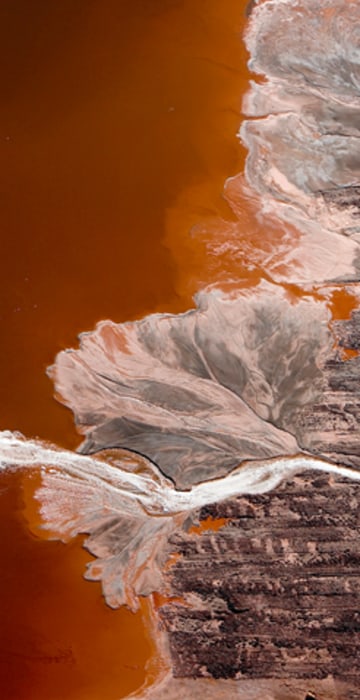
Tamron Hall
Our planet’s ‘Industrial Scars’
See a collection of photos by J Henry Fair that documents the frightening yet beautiful effects of unsustainable consumption.
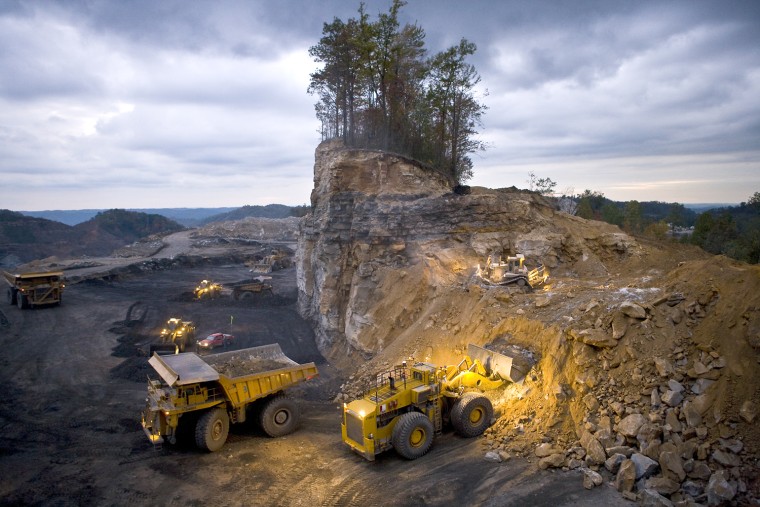
'The Last Stand'
In these images, photographer J Henry Fair documents the unsustainable consumption of our planet’s natural resources, like petroleum. He says his work “is a response to my vision of society” and his aim was to make the photos "beautiful and frightening simultaneously.” In this photo, overburden created by blasting is removed using various machines. Mining operations work around the clock at amazing speeds; this lonely patch of trees disappeared in barely a day. The small bulldozer on the upper level pushes loose material down to the loader, which scoops it up into the next earth mover in line, which will dump it into a nearby valley fill, burying the stream there.
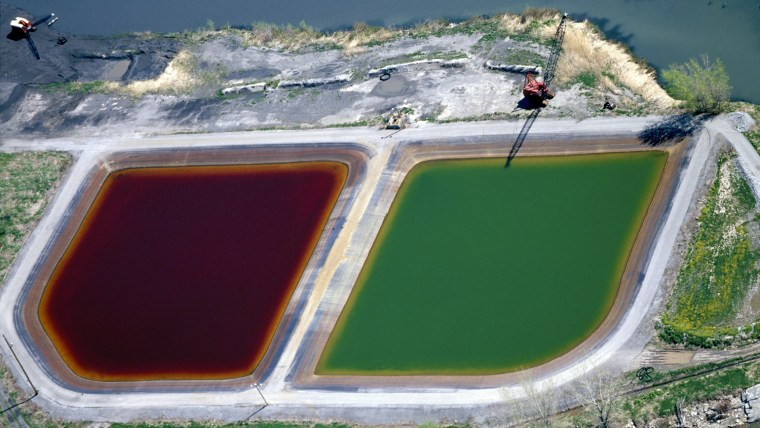
'Paintbox'
These are holding ponds at a coal-burning power plant. Both the combustion ash and the smokestack residue from coal-burning power plants are extremely toxic. Coal plants are a major source of radiation released into the environment; additionally, these plants release concentrated levels of arsenic, cadmium, chromium, lead, selenium, sulfates, boron and other contaminants.
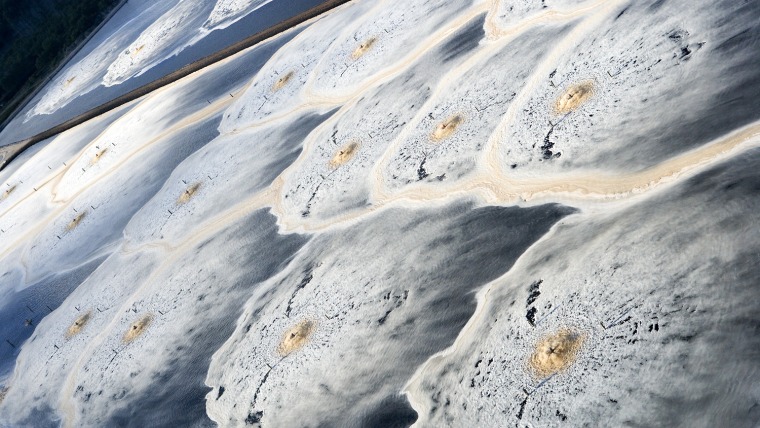
'Facial Tissues'
This is a waste treatment aeration pond at a paper mill. This particular factory produces a popular facial tissue. The primary task of the treatment pond is to remove organics (wood fiber) from the water before it is returned to its source (typically a river). These ponds are filled with a mixture of microorganisms that break down the organic material. The aeration process breaks up particles in the effluent and provides oxygen to the microbes.
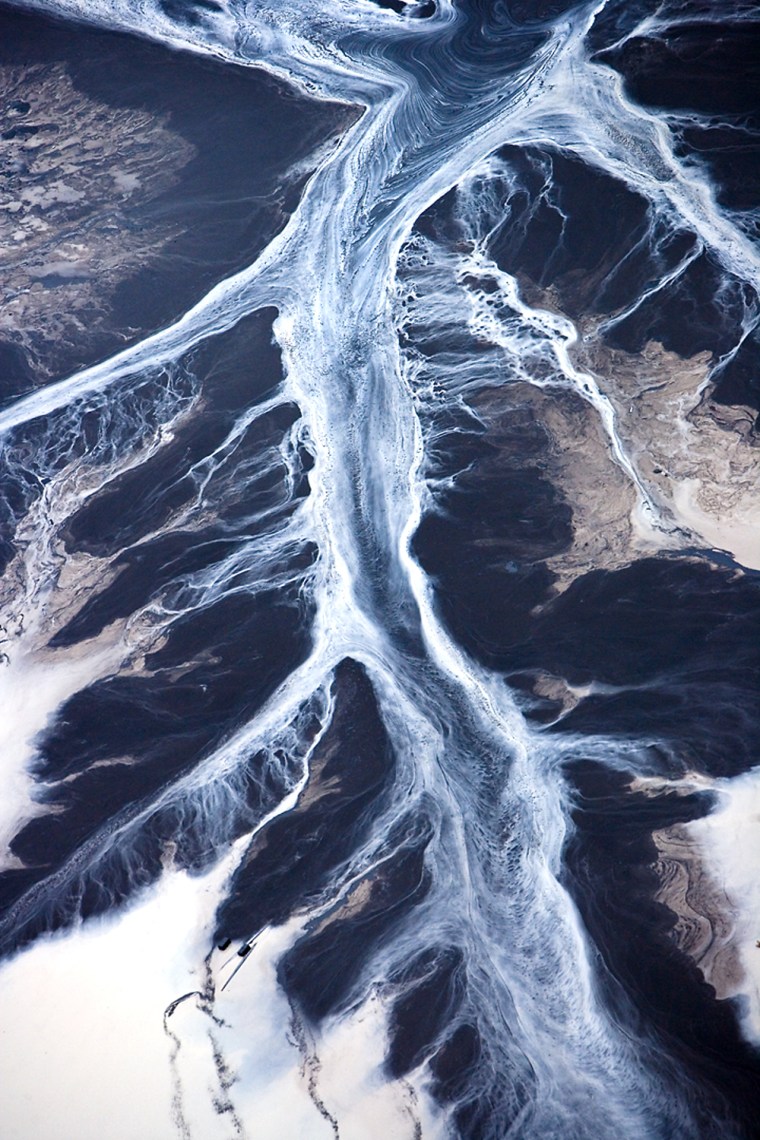
'Coal Slurry'
Coal must be washed with water and processed with a variety of chemicals before it is used. This creates tremendous volumes of "slurry," which is stored in impoundments created by building earthen dams across the ends of a valleys. On numerous occasions, impoundments have failed, releasing large quantities of the toxic mixture to devastate the valley below.
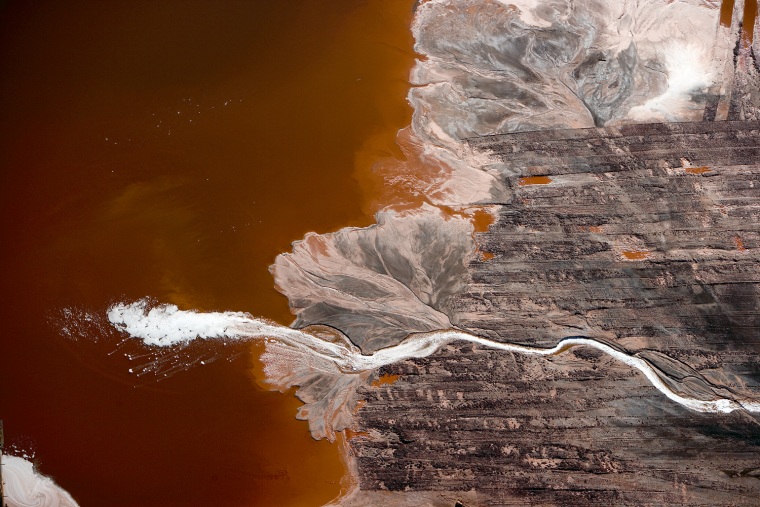
"Expectoration"
This photo shows a plume of foam in bauxite waste. Producing aluminum metal involves refining bauxite (the ore), using caustic chemicals and tremendous amounts of electricity to produce alumina, and the electrolytic reduction of alumina to produce aluminum. This depicts the disposal of the byproducts, in which the solids (mostly impurities in the bauxite) are separated from the liquids. Also, during primary aluminum production, PFCs (CF4 and C2F6) are emitted as byproducts of the smelting process, both significant greenhouse gases.
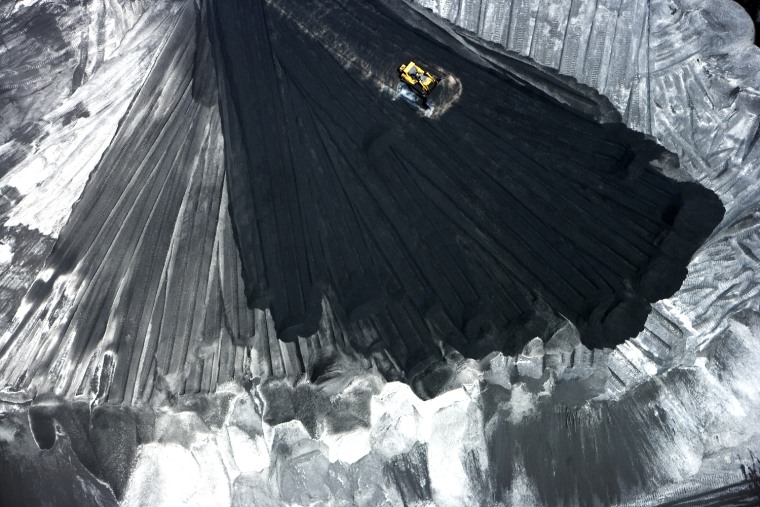
'Sisyphus'
This photo shows a bulldozer pushing petroleum coke. Petroleum coke is a solid high carbon material that is produced as a byproduct of the oil refining process. It can serve as either an energy source or carbon source. Fuel grade petroleum coke, which serves as an energy source, represents about 71 percent of the total petroleum coke production. This product is burned to produce energy used in making cement, lime, co-generation and other industrial applications. Products that utilize petroleum coke as a carbon source include aluminum (calcined coke) and steel (metallurgical coke).
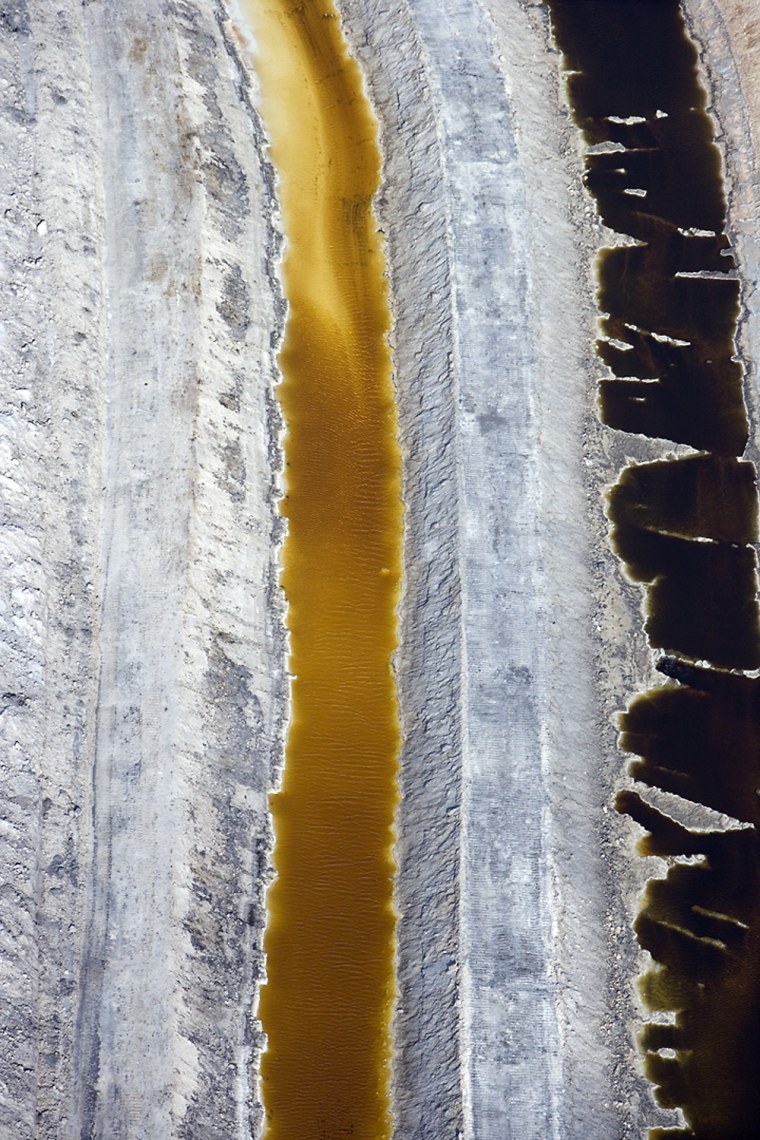
'Black and Gold'
These fertilizer waste channels, created from the processing of raw phosphate with sulphuric acid, are radioactive and acidic, and are clearly mixing with surface water, thus groundwater. Chemical fertilizer is the catalyst that powers the modern industrial agricultural revolution, but estimates predict that the supply of phosphate will be exhausted in 50 years or so. Also, petroleum-based fertilizers deplete the nutrients from the soil, and the bodies of the people eating the harvest of that soil. Finally, the fertilizers erode from the point of application and work down through the water systems, creating dead zones in streams, lakes and oceans.
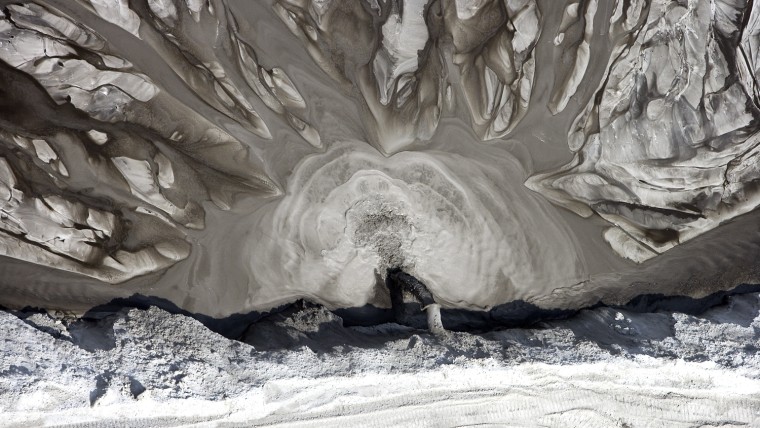
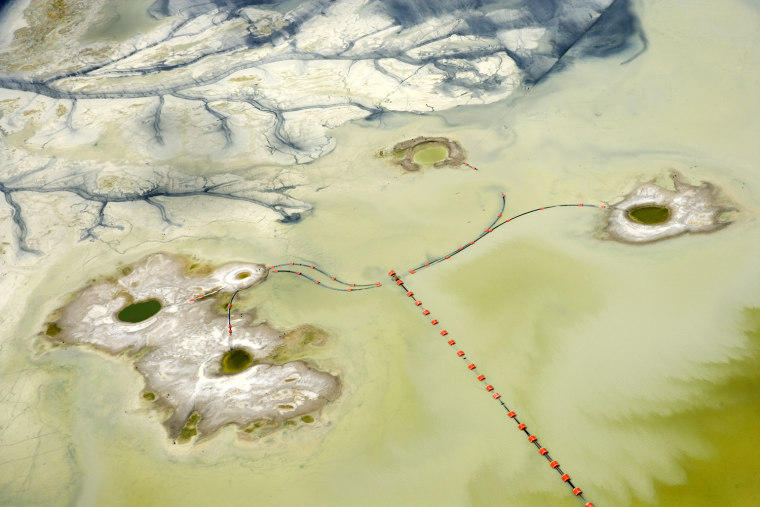
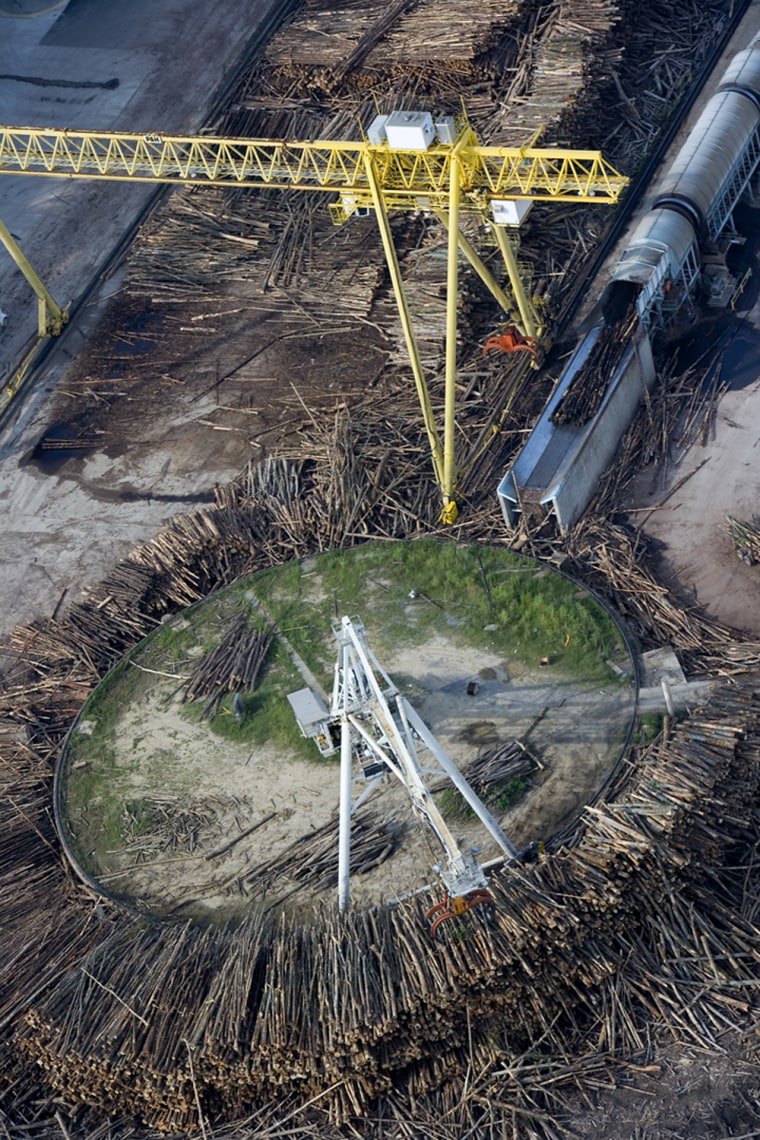
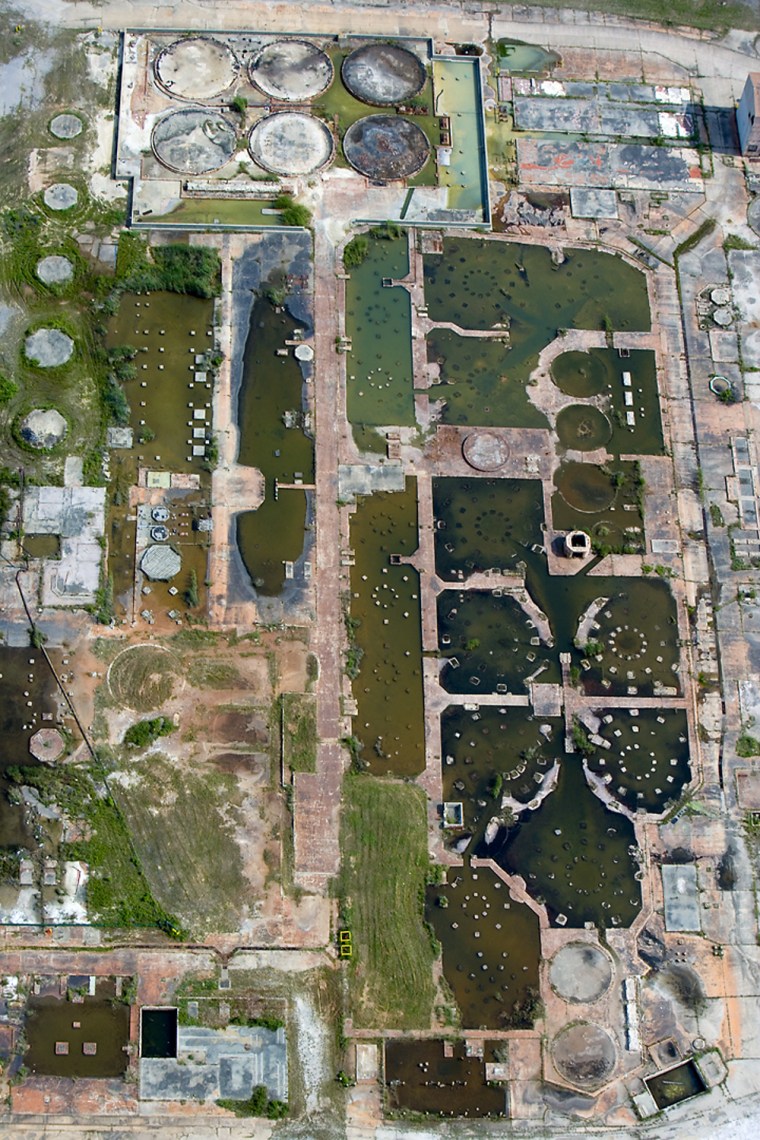
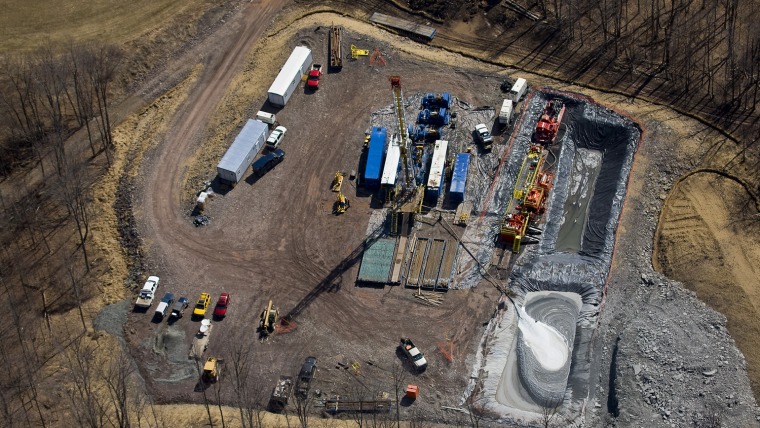
'The Pit'
This is an image of a waste pit for drilling mud; byproducts from these mining operations include rock debris, drill bit lubricants, and possibly residual radioactive material. The type of waste being produced indicates that exploration is still in progress. The overspray on the bottom right is a violation and a danger to any water bodies below.
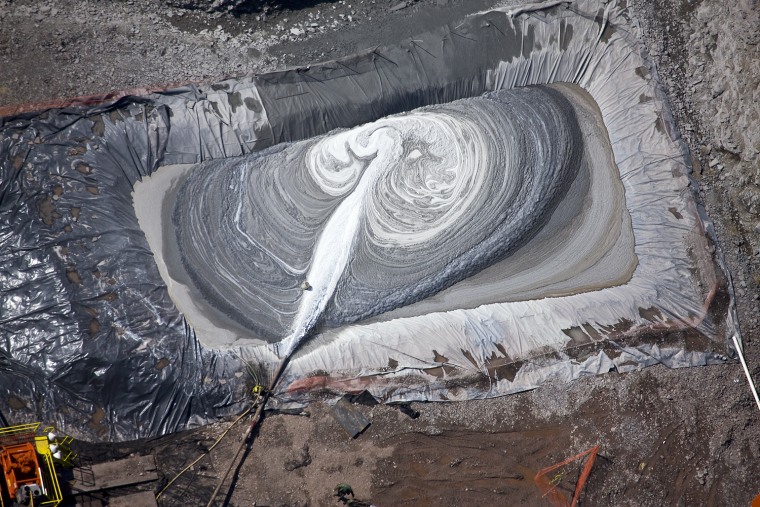
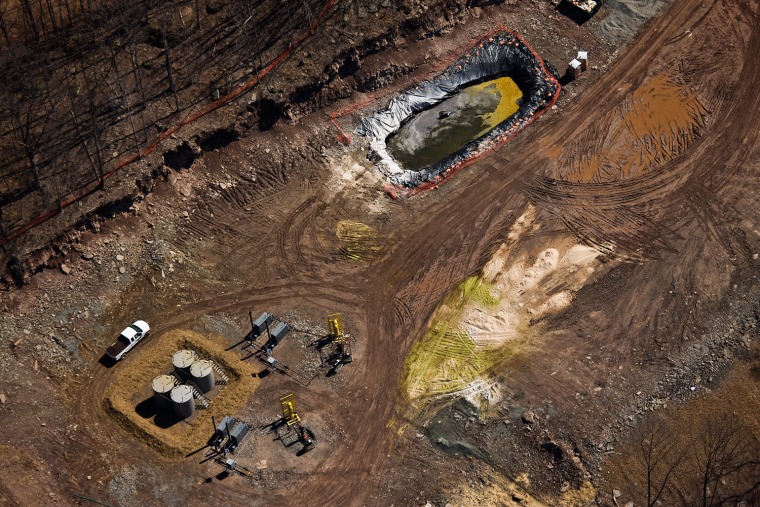
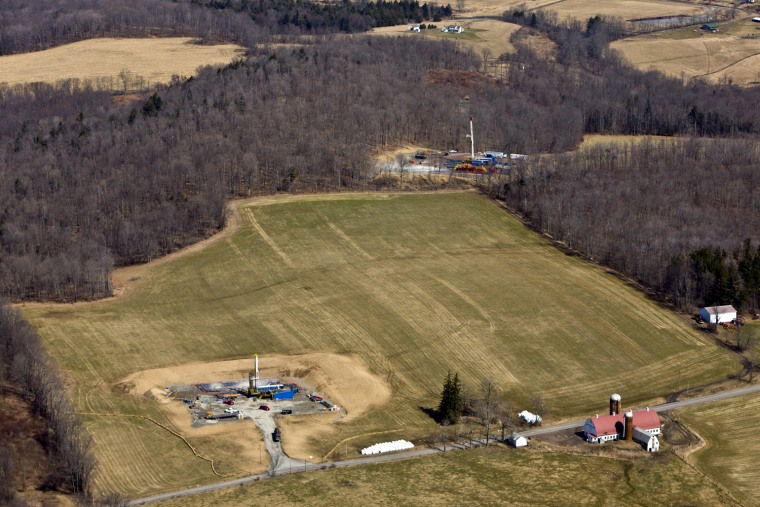
Gas drilling
Here, the gas drilling rights dwarf the farm that hosts them. Some farmers who have signed leases are exploring legal means of escape. Hydro-fracing can deplete the water table in the area, contaminate the wells on the host property as well as those nearby, aside from being a horrible eyesore.
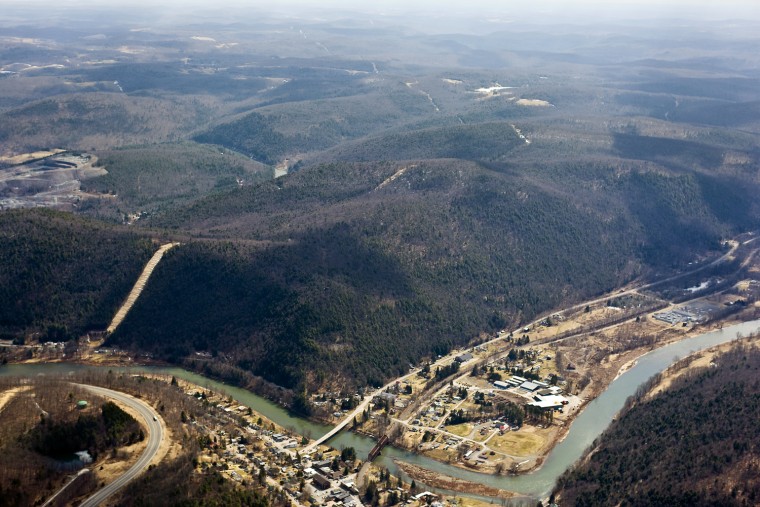
Millennium Pipeline Path
In this image, we see the Millennium Pipeline Path, Delaware River, and the town of Hancock, N.Y. The pipeline's course, identified by the denuded strip, is clearly visible from the air. In spite of its name, the pipeline has already been disinterred to increase its capacity.